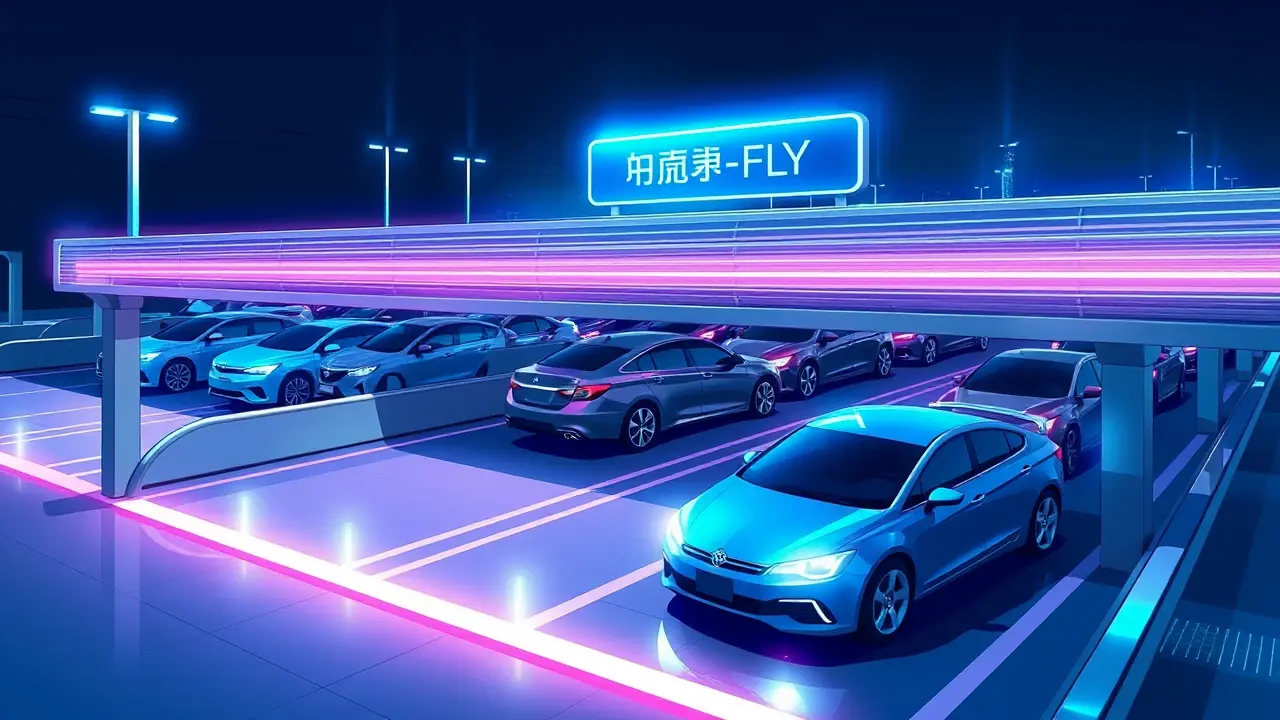
Othertransport & aviationAirlines and Airports
New Hong Kong Airport Automated Parking for Mainland Travelers
AN
Andrew Blake
4 hours ago7 min read
The upcoming launch of the fully automated 'Park and Fly' facility at the Hong Kong International Airport, nestled within the restricted zone of the Hong Kong-Zhuhai-Macau Bridge, represents a fascinating evolution in the intricate dance of cross-border logistics and regional integration. With about 400 applications already received ahead of its opening next week, this five-storey, 1,800-space car park is far more than a simple convenience; it's a tangible response to the growing demand from mainland Chinese travelers seeking seamless access to overseas flights, promising a transition from vehicle drop-off to check-in counter in a remarkably efficient thirty minutes.This initiative didn't emerge in a vacuum. To understand its significance, one must consider the historical context of the Greater Bay Area project, a colossal Chinese government ambition to fuse Hong Kong, Macau, and nine Guangdong cities into an integrated economic and business hub.The Hong Kong-Zhuhai-Macau Bridge itself was a monumental first step in physically connecting these disparate systems, but physical infrastructure is only half the battle. The persistent friction points for mainland drivers—complex border procedures, unfamiliar road rules, and the logistical headache of long-term parking—have long acted as a subtle brake on the full realization of this regional vision.The 'Park and Fly' system, leveraging automation to streamline this process, is a direct attempt to lubricate these gears of movement. Delving deeper, the technology powering this facility likely involves a sophisticated network of license plate recognition, automated guidance systems, and robotic valets, a silent orchestra of machinery designed to minimize human interaction and maximize throughput.This isn't merely a parking garage; it's a critical node in a larger data-driven ecosystem aimed at managing the flow of people and capital. From a geopolitical and economic perspective, this development speaks volumes.It reinforces Hong Kong's strategic role as a super-connector, a role it has fiercely protected since its handover, by proactively creating infrastructure that caters specifically to its primary source of tourists and business travelers. However, it also raises intriguing questions about dependency and integration.Does this make Hong Kong's international travel infrastructure more reliant on mainland patterns? What are the data security implications of tracking vehicle movements from the moment they enter the bridge's restricted area? Experts in urban planning might argue this is a masterstroke in optimizing limited space in a densely populated region, while sociologists could examine it as a case study in the softening of borders within 'One Country, Two Systems'. The potential consequences are multifaceted: on one hand, we could see a significant uptick in same-day international travel from the mainland, boosting airport retail and airline revenues.On the other, it could intensify traffic on the bridge approach and create new pressures on airport security to handle concentrated waves of passengers. Looking forward, the success of this model could become a blueprint for other border regions worldwide, from the US-Mexico frontier to intra-EU crossings, demonstrating how smart automation can dissolve logistical barriers. It’s a seemingly mundane story about parking, but when you pull on the thread, it unravels into a complex tapestry of technology, policy, economics, and the ever-evolving relationship between Hong Kong and the mainland—a perfect example of how the most interesting stories are often hidden in the infrastructure we take for granted.
#featured
#Hong Kong Airport
#Park and Fly
#automated parking
#mainland travelers
#Hong Kong-Zhuhai-Macau Bridge
#transport innovation
Stay Informed. Act Smarter.
Get weekly highlights, major headlines, and expert insights — then put your knowledge to work in our live prediction markets.
© 2025 Outpoll Service LTD. All rights reserved.